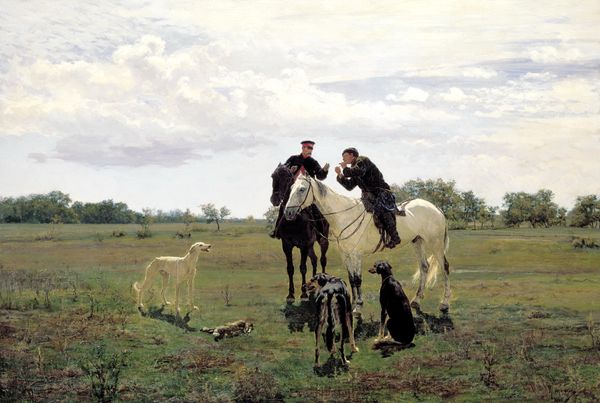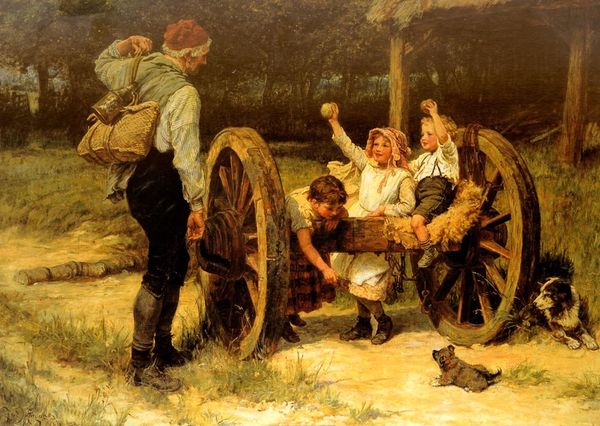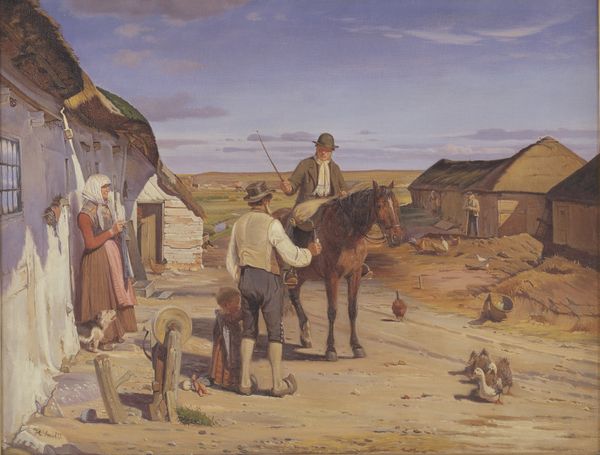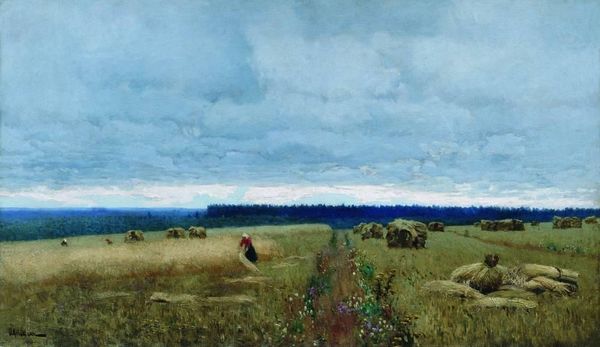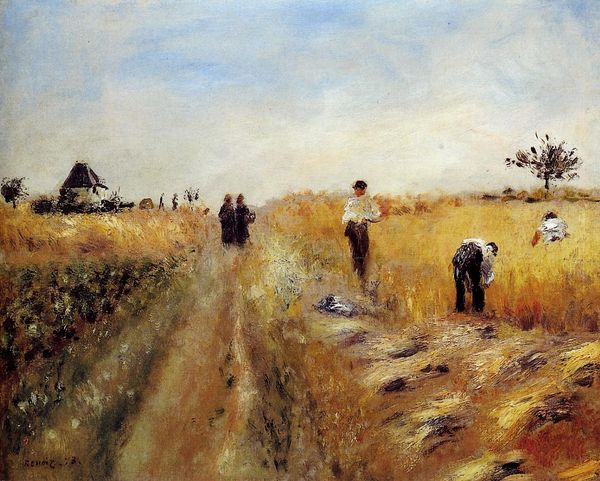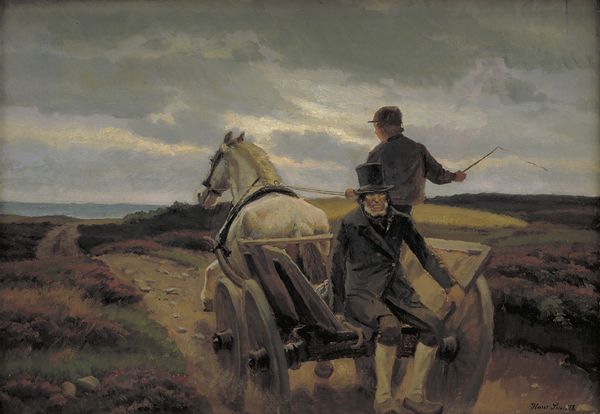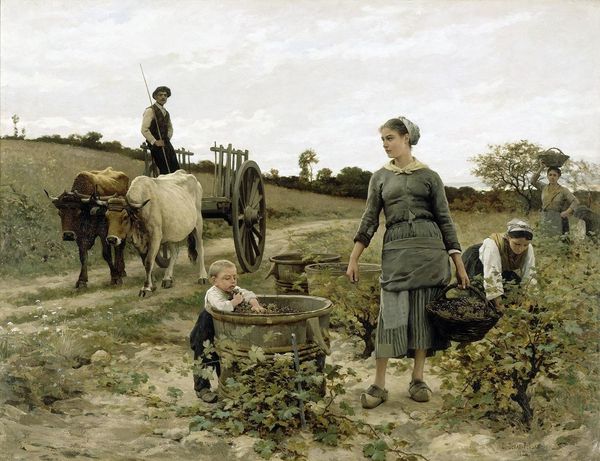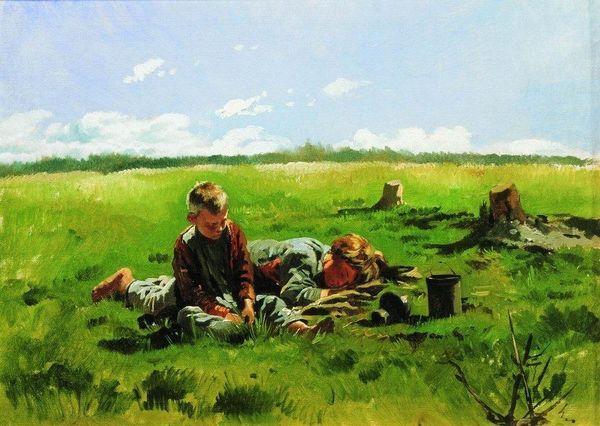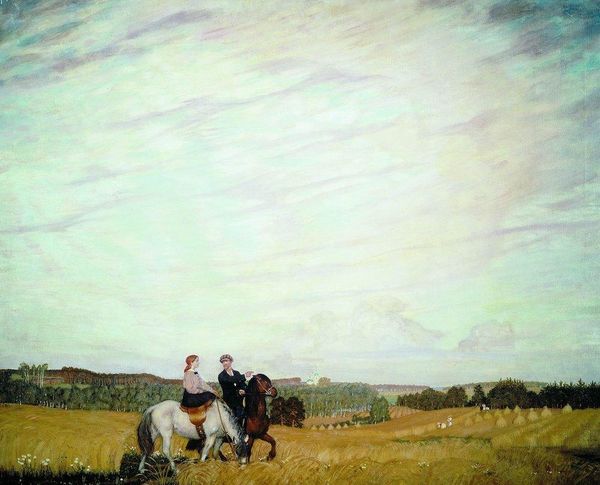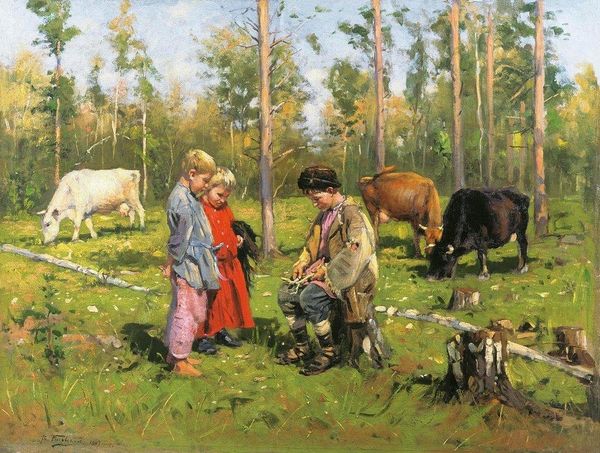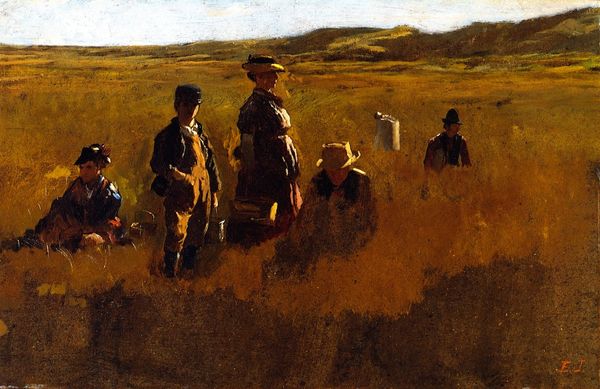
Hunters at Rest 1887
0:00
0:00
vladimirmakovsky
Serpukhov Museum of History and Fine Arts, Serpukhov, Russia
Copyright: Public domain
Editor: Vladimir Makovsky's "Hunters at Rest," painted in 1887 with oil paints, presents a quiet, rural scene. I am struck by the horizontal composition and the overall muted palette; it conveys a feeling of calm. What catches your eye from a formal perspective? Curator: The carefully structured composition immediately draws me in. Consider the deliberate arrangement of the figures – how the light falls on them, emphasizing their forms against the backdrop of the landscape. Notice, too, the contrasting textures; the roughness of the men’s attire and gun carriage, juxtaposed with the soft fur of the dogs. It creates a tactile visual experience. How does the artist use color to create a mood? Editor: I see mostly earth tones. The browns and greens give the painting a natural, grounded feel, while the white clothing creates focal points. Do you think the artist manipulates perspective to communicate a narrative? Curator: Precisely. While there is a fairly standard sense of perspective – closer objects are more prominent – the figures aren’t truly integrated with the landscape; they seem positioned against it, creating layers within the painting. Consider this layering: what meanings might it construct for the observer? Does the interplay between realism and painterly abstraction enhance the emotional impact? Editor: Perhaps the separation highlights the figures, bringing their activity to the forefront, a central action amidst the expansiveness of nature. Now I see how this painting focuses attention to the careful detail rather than offering any narrative, and also reflects both realist and avant-garde impulses! Curator: Indeed. By analyzing the structure and composition, we appreciate how Makovsky masterfully combines form and function in his painting.
Comments
No comments
Be the first to comment and join the conversation on the ultimate creative platform.
